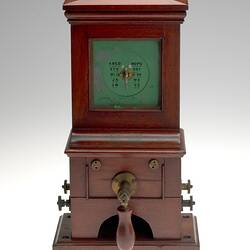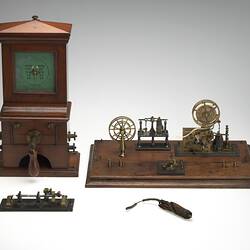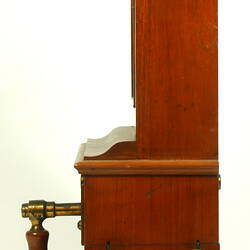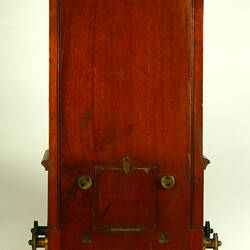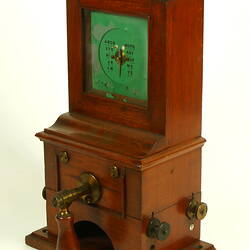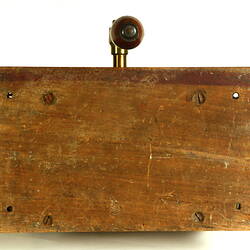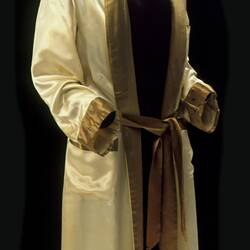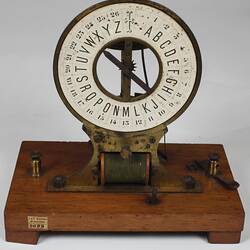Summary
Single needle telegraph instrument, patented by Cooke and Wheatstone in 1845.
This instrument is an example of a needle telegraph system which pre-dated the morse telegraph system and which remained in use, particularly in railway applications, until well into the 20th century.
Messages were transmitted by turning the handle on the front of the instrument to right or left to transmit current pulses of positive or negative polarity along the telegraph line. The sequence of pulses represented letters of the alphabet according to a code marked on the dial. At the receiving end, the needle on the instrument dial was deflected to left or right depending on the polarity of the received pulses. When fully deflected the needle struck a pin projecting from the dial of the instrument. Depending on the direction of the needle deflection, the pin struck by the needle produced a different sound. Thus the message could be interpreted by an operator using sound alone.
Physical Description
Wooden case with brass fittings. Wooden handle projecting from lower front of case. Two brass screw terminals on each side of lower case. Square glass window in front upper case covering dial with vertical needle pivoted in centre. Dial marked with telegraph code showing letters of the alphabet and their corresponding needle deflection sequences.
More Information
-
Collection Names
-
Collecting Areas
-
Acquisition Information
Donation from (Estate of) Mr John J. Thompson, 27 Apr 1915
-
Manufacturer
-
Collector
Mr John J. Thompson, 12 Rose Street, Armadale, Greater Melbourne, Victoria, Australia, 27 Apr 1915
-
Classification
-
Category
-
Discipline
-
Type of item
-
Overall Dimensions
272 mm (Length), 225 mm (Width), 500 mm (Height)
-
Keywords

